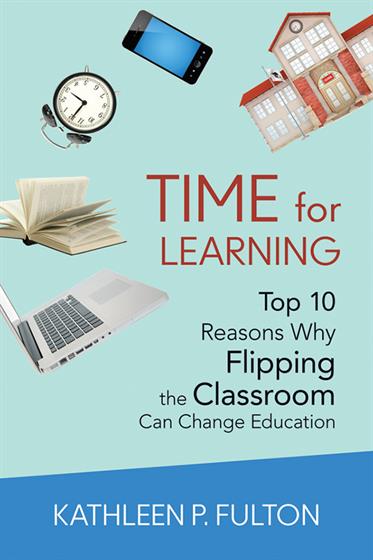Preface
Why a Book on Flipped Classrooms?
How This Book Is Different
Who Can Benefit From This Book?
Acknowledgments
About the Author
Introduction
What Is Flipping Anyway?
How Do Teachers Create Flipped Lessons?
How Different Is Flipping?
The Flipping Mindset
A Brief History of Flipping
How Common Are Flipped Classrooms?
Will Flipping Exacerbate the Digital Divide?
Why Is Flipping Catching Fire? Read On!
Chapter 1. Flipping Maximizes Time for Active Learning
Lecturing: The Oldest Form of Teaching
Moving Instruction From Group Time Into the Individual Learning Space
What Does Maximizing the Use of Class Time Look Like in Flipped Classrooms?
Caveats
Summary
Chapter 2. Flipping Facilitates Differentiated Instruction
Working With Each Student Every Day
Flipping and Mastery Learning
Caveats
Summary
Chapter 3. Flipping Is Grounded in Learning Theory
What's Wrong With Lecturing?
What Makes Flipping Instruction Different?
Building Flipping on a Strong Learning Foundation
How Do People Learn?
Inquiry or Challenge-Based Learning
Other Key Elements From Cognitive Science Research
Additional Areas for Research
Caveats
Summary
Chapter 4. Flipping Effectiveness Data Show Promise
The Power of Data
More to Learn
Caveats
Summary
Chapter 5. Flipping Benefits Teachers Too
A Tradition of Solo Practice
Where Does Flipped Teaching Fit in?
Co-Flipping: Taking Flipped Team Teaching Beyond the School Walls
Teacher Learning: Embedded and Flipped Professional Development
Are Teachers Ready to Use Technology for Flipping?
Caveats
Summary
Chapter 6. Students Like Flipping
Use of Technology Is Not Just Cool, It's Expected
Self-Pacing Brings Independence to Learners
Rewinding the Teacher
More Student Engagement = Fewer Disciplinary Problems
More Time With Teachers
Not All Students Want to Adjust to a New Teaching Style
Caveats
Summary
Chapter 7. Flipping Brings the Classroom to Parents
Parents' Views of Classrooms: Memories of Bygone Days
Preparing Parents for Flipping
Caveats
Summary
Chapter 8. Flipping Makes Effective Use of Resources
The Push/Pull of Technology Innovation and Implementation
Technology Adoption in K-12 Education
Digital Readiness
But the More We Have, the More We Want
Where's the Money to Pay for All This?
Caveats
Summary
Chapter 9. Flipping Builds 21st Century Skills
First Century Skills Is More Like It
Workforce Success and School Skills
Where Does Flipping Fit in?
Supporting Bloom With Technology
Caveats
Summary
Chapter 10. Flipping the Future
How Might Flipped Classrooms Impact Education?
What Might Other Benefits Be?
What Could Be the Downsides?
What Might Prevent Flipping From Gaining Traction in K-12 Classrooms?
Flipped Classrooms: Lasting Impact or Passing Fad?
Final Thoughts: Can We Flip the Future?
Appendix: Educators' Q&A on Flipped Classrooms
References
Index



